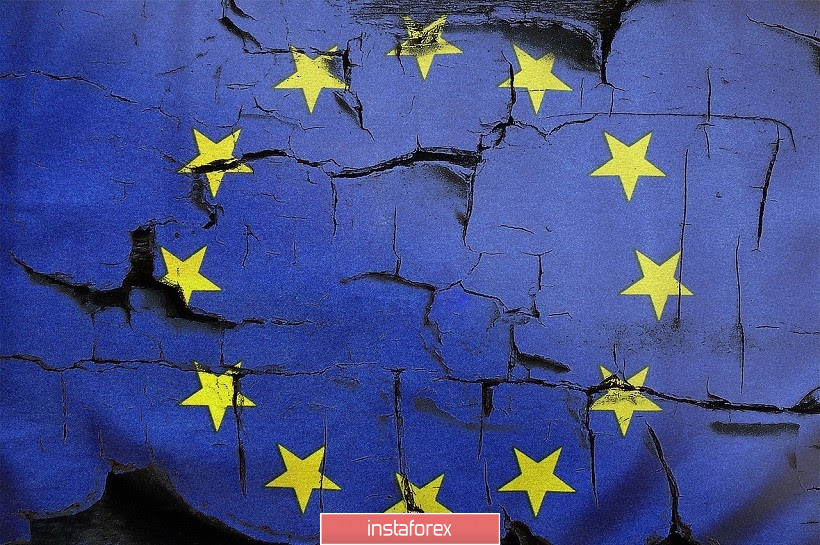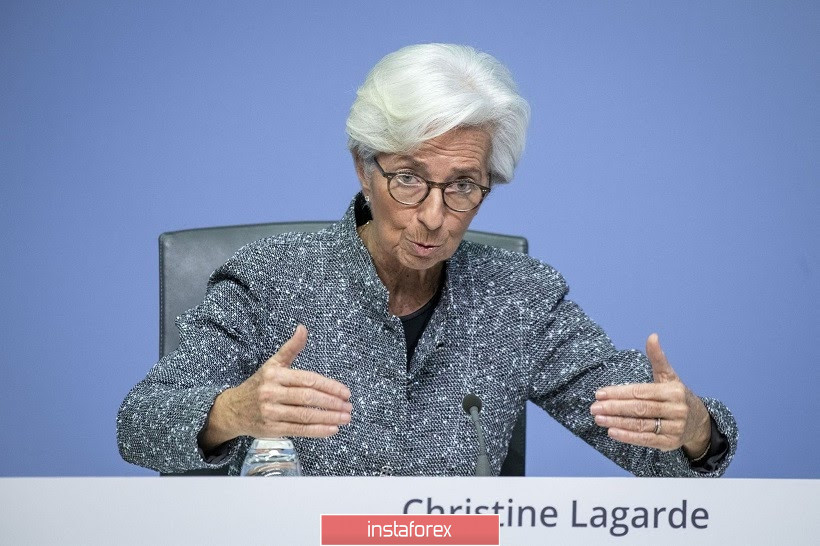The bears of the EUR/USD pair completed the "minimum program" this week: firstly, after a two-week siege, it consolidated below 1.0850, and secondly, updated its four-week low at 1.0727 exactly a month ago, on March 24.
Despite the general bearish mood for the pair, it was not easy for sellers to win each point. Buyers often take the initiative and buy back EUR/USD at lows, thus provoking a corrective growth. The former excitement around the US currency is no longer on the market – the pair is falling mainly due to the euro's weakness. The dollar index this week did not leave the boundaries of the hundredth figure – that is, on the one hand, investors have not lost interest in this currency, but on the other hand, the dollar has recently been in high demand only when there are spikes in anti-risk sentiment. Therefore, the main culprit of the bearish celebration for the pair is the euro – while the dollar plays a secondary role here.

Why is the European currency, against the background of the passivity of the dollar, unable to show character and organize large-scale correctional growth? There were several prerequisites for a similar price spurt this week, but they did not materialize. For example, fairly good reports from the ZEW Institute were published at the beginning of the week. Despite the pessimistic forecast, the indicators came out in the green zone. In particular, the mood index in the business environment, instead of falling to around -40 points, dropped to only 28. This result inspired the EUR/USD bulls and the pair to test the ninth figure. But this optimism was offset when the PMI indices were published on Thursday. The indicators turned out to be much worse than forecasted values, and they even recorded historical anti-records in the service sector. For example, the German indicator in this sector of the economy collapsed to 15.9 points in April, and the pan-European one to 11 points. Similar indices in France showed the same result - the business activity index in the services sector there also updated the anti-record, dropping to 10 points.
However, the EUR/USD bears failed to consolidate their success yesterday, as German Chancellor Angela Merkel voiced an optimistic statement regarding the possible outcome of an online summit of EU leaders. As it turned out, this optimism was premature.
The results of the above summit disappointed investors. On the one hand, European leaders have approved a program of assistance worth 540 billion euros. But, firstly, this fundamental factor was "played back" a week and a half ago, and secondly, traders expected more from this meeting. In addition, ECB President Christine Lagarde and French President Emmanuel Macron voiced quite pessimistic rhetoric, the essence of which is that Europe is too slow and insufficient to respond to the challenges of the epidemic. Actually, the results of yesterday's summit were an additional confirmation of these words: leaders of the EU countries could not agree on a long-term plan for economic recovery in the eurozone, the amount of assistance under which could reach from one to one and a half trillion euros. In fact, European leaders have put this question "on the back burner" - they instructed the European Commission to work out the details of the economic recovery plan for the next meeting of the Eurogroup, which will take place in a few weeks.
According to experts, even if this plan is agreed, it will not be earlier than June. And although this time the meeting was held without emotional accusations of Italians against Berlin and Brussels, the problem itself remained unresolved. Germany and the neighboring countries of the north (the Netherlands, Finland, Estonia, and some others) propose the use of the European stabilization mechanism, while the countries of the south (primarily France, Italy and Spain) still require crown bonds to be issued. Italian politicians have repeatedly stated that they do not want to go the Greek way - "money in exchange for austerity measures."
Against the background of such contradictions and rather indistinctive results of the summit, the euro-dollar pair not only returned to the seventh figure, but also updated the monthly low. Christine Lagarde added fuel to the fire by saying that the decline in the eurozone economy as a result of the pandemic could be up to 15% this year. This decline is an unprecedented indicator in the history of the European Union.

The pair could not gain a foothold at the bottom of the seventh figure despite such a negative fundamental background for the euro. Having updated the low, the price returned to the borders of the eighth price level. Correctional growth was due to a general weakening of the US currency - the dollar index shows a negative mood in the second half of the day. All this suggests that not only do the bears need a weak euro, but also a strong dollar in order to continue the downward trend. However, as mentioned above, the US currency is in demand only when there is a surge in anti-risk sentiment, while US national statistics only put pressure on the greenback (for example, the volume of orders for durable goods collapsed immediately in March by 14%).
Thus, the EUR/USD traders seem to have formed low at the bottom of the seventh figure this week. Bears need a very good news item to overcome the 1.0727 mark, or a general (and significant) increase in the anti-risk sentiment. A strong support level is the mark of 1.0700 (the lower line of the Bollinger Bands indicator on the weekly chart). As for trading decisions, when approaching the bottom of the seventh figure, one can consider long positions with a correctional target of 1.0890 (the middle line of the Bollinger Bands indicator, which coincides with the Kijun-sen line on D1). "Playing for a fall" is quite risky: bears within the seventh figure now feel a certain discomfort, while buyers are quite active on price downturns.





















